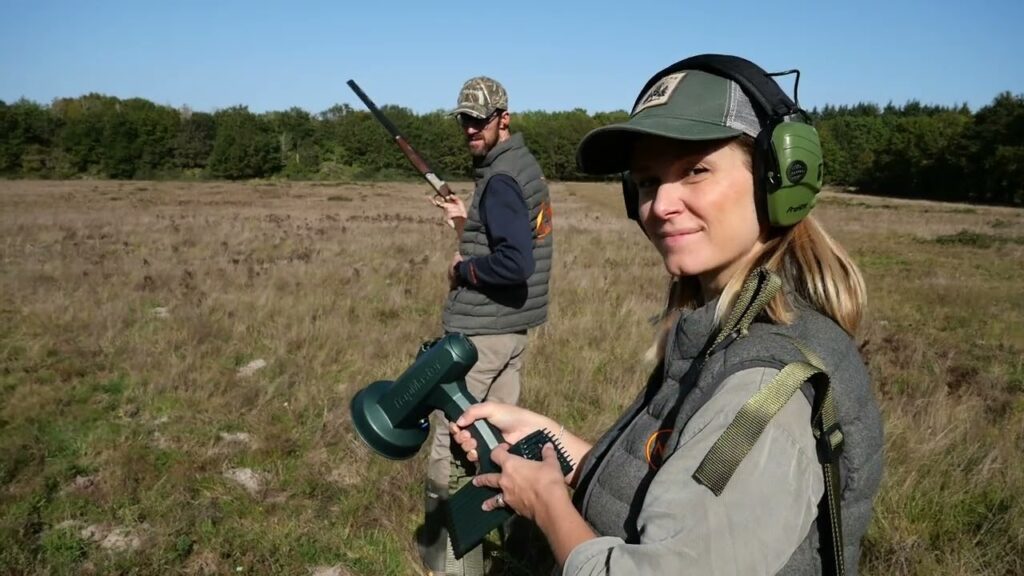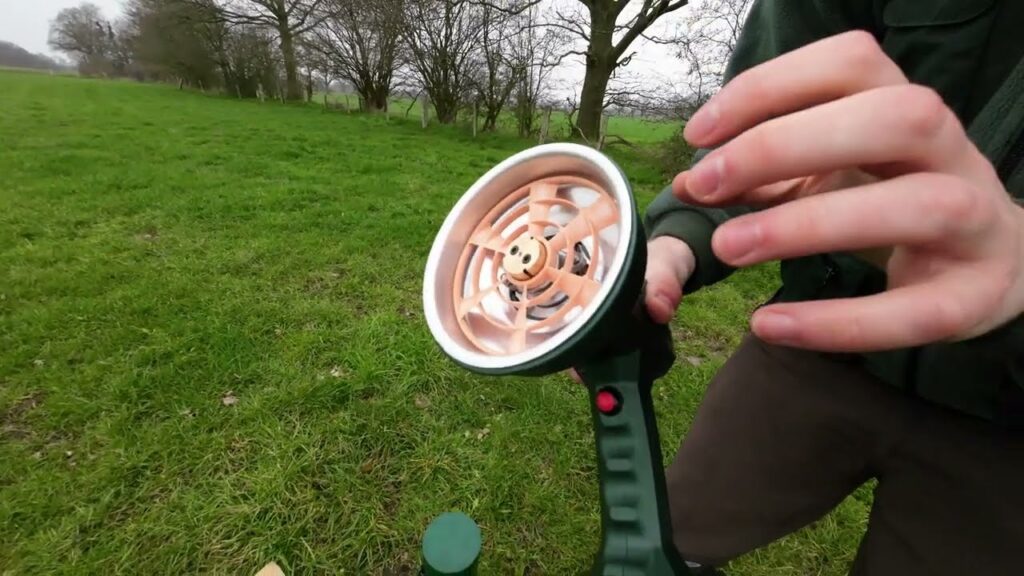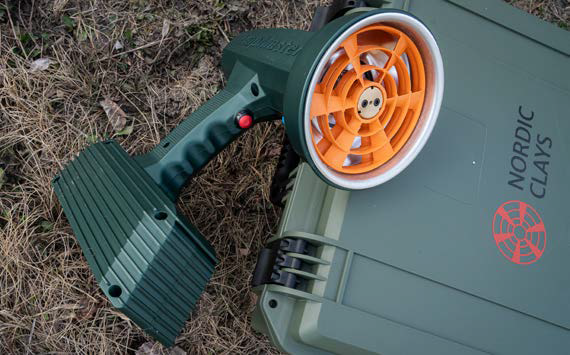
Revolutionizing target practice: The rise of electric clay pigeon shooters
Clay pigeon shooting, a popular sport enjoyed around the globe, challenges participants to shoot clay targets flung into the air at high speeds. Originating as a way to simulate bird hunting, this sport has evolved into a competitive and recreational activity that sharpens shooting skills and improves hand-eye coordination. Traditionally, the launchers, or “traps,” used in clay pigeon shooting have been manually operated or mechanically driven, requiring physical effort and sometimes resulting in inconsistent target trajectories.
Enter the era of the electric clay pigeon shooter—an innovative advancement in shooting technology. These modern devices harness electricity to offer unprecedented precision and reliability in how targets are launched. With features like adjustable speeds and angles, electric clay pigeon shooters allow for a customizable shooting experience that caters to both novices and seasoned shooters alike.
The benefits of using an electric model over traditional methods are manifold. Firstly, they provide a consistent launch path, greatly enhancing the shooter’s ability to practice and improve. They are also generally easier to operate, with features that allow for quick adjustments and minimal physical strain. Furthermore, electric shooters can offer a safer and more environmentally friendly option, as they typically produce less noise and have fewer mechanical parts subject to wear and tear.
As we delve deeper into the capabilities and advantages of electric clay pigeon shooters, it becomes clear that this technology is not just enhancing the way we practice the sport but revolutionizing it, making it more accessible, enjoyable, and competitive than ever before.
Understanding electric clay pigeon shooters
Electric clay pigeon shooters, also known as automatic traps, are devices engineered to launch clay targets into the air electronically, providing a more controlled and consistent shooting practice environment. Unlike traditional manual or mechanical traps, these electric machines use electrical components and motors to automate the process, ensuring a high degree of precision and reliability.
How electric clay pigeon shooters work
The fundamental operation of an electric clay pigeon shooter involves an electric motor that powers a mechanism to fling the clay targets. Upon activation—usually via a remote control or a foot pedal—the machine’s arm is tensioned and then quickly released, propelling the clay into the air at varying speeds and angles. This process can often be tailored to the user’s preferences, allowing changes in speed, direction, and elevation to mimic different types of game or to provide varied levels of difficulty.
Key differences between electric and manual clay pigeon throwers
The distinction between electric and manual clay pigeon throwers lies primarily in their operation and usability:
1. Consistency and precision: Electric throwers offer consistent speeds and trajectories, which are crucial for effective practice and competition. Manual throwers, while useful, depend heavily on the operator’s strength and technique, which can lead to variability in launches.
2. Ease of Use: Electric models are typically easier to operate. They can be managed via remote controls, allowing for solo operation and the ability to focus entirely on shooting rather than on manually setting up each throw.
3. Adjustability: With electric throwers, users can easily adjust the range, angle, and speed of the clays. This adjustability is often limited or more cumbersome in manual models, where changes usually require manual adjustments to the machine’s physical settings.
4. Capacity: Electric throwers generally hold more clays, reducing the need for frequent reloading compared to their manual counterparts, which often have lower capacity and require more hands-on interaction.
5. Durability and maintenance: Electric clay pigeon shooters are designed for durability with less physical wear and tear during operation, though they may require more sophisticated maintenance given their electronic components.
By integrating technology into their design, electric clay pigeon shooters have transformed how enthusiasts approach and enjoy the sport, providing a modern solution that enhances both the learning curve and the overall experience of clay pigeon shooting.
Benefits of using an electric clay pigeon shooter
Embracing an electric clay pigeon shooter brings a multitude of benefits that enhance both the enjoyment and effectiveness of shooting practice. From consistent performance to environmental advantages, these devices are designed to meet the needs of modern shooters.
Consistency and reliability in launching
One of the standout features of electric clay pigeon shooters is their ability to consistently launch targets with precision. This reliability stems from automated systems that ensure each clay is released in the same manner, helping shooters to better predict flight paths and refine their aiming techniques. Consistency in the machine’s operation not only aids in skill development but also ensures fair conditions in competitive shooting scenarios.
Speed adjustments and how they benefit shooters of different skill levels
Electric clay pigeon shooters are equipped with adjustable speed settings, allowing users to customize the challenge according to their skill level. Beginners can start with slower, more predictable launches, which provide them ample time to aim and shoot. As their skills advance, they can increase the speed to simulate more challenging scenarios, mirroring the unpredictability of live quarry shooting. This adaptability makes electric shooters ideal for a wide range of users, from novices learning the basics to experts honing their precision and reaction times.
Enhanced safety features
Safety is paramount in any shooting sport, and electric clay pigeon shooters contribute significantly to a safer shooting environment. These machines often include safety mechanisms that prevent accidental launches and ensure that the arm is only activated when it is safe to do so. Additionally, the remote operation capability allows the shooter or a supervisor to control the launch from a safe distance, minimizing the risk of injury associated with manual loading and releasing.
Environmental benefits of electric shooters
Electric clay pigeon shooters also offer environmental advantages over traditional gas-powered or manual models. These electric machines typically operate quieter, reducing noise pollution—a significant benefit for shooting clubs near residential areas. Furthermore, they do not emit fumes or require combustible fuels, which helps in reducing the carbon footprint associated with shooting activities. The durability and low maintenance of these devices also contribute to less frequent replacements and repairs, reducing waste.
The benefits of using an electric clay pigeon shooter are clear, encompassing everything from improved skill development to environmental responsibility. These advancements ensure that the sport remains accessible, enjoyable, and safe for everyone involved, paving the way for future innovations in the field.
Choosing the right electric clay pigeon shooter
Selecting the ideal electric clay pigeon shooter can significantly enhance your shooting experience, whether you’re training for competition or engaging in recreational shooting. Understanding the key factors to consider, the range of models available, and cost implications can help you make an informed decision that suits your needs and budget.
Factors to consider when buying an electric clay pigeon shooter
1. Capacity: Consider the number of clays the machine can hold and throw before needing a reload. A higher capacity is particularly useful for extended practice sessions or when multiple shooters are involved, as it reduces downtime and keeps the action flowing.
2. Range and angle adjustments: The ability to adjust the throwing range and angle is crucial for simulating various shooting scenarios. Look for a machine that offers a wide range of adjustments, which can help you practice for different types of targets and shooting disciplines.
3. Size and portability: Depending on your shooting environment and storage options, the size and portability of the shooter might be a significant factor. Some models are designed to be more compact and easy to transport, ideal for those who travel to different shooting ranges or have limited storage space.
4. Durability and weather resistance: Given that shooting often takes place outdoors, finding a machine that is durable and resistant to various weather conditions is important. Look for models built with high-quality materials that can withstand exposure to elements such as sun, rain, and dirt.
5. Ease of use: Consider how user-friendly the machine is. Features like remote controls, safety mechanisms, and clear instructions can make your shooting practice more efficient and enjoyable.
Top models available in the market
While specific brands or models won’t be endorsed here, it’s useful to know that the market offers a range of electric clay pigeon shooters designed for different levels of expertise and budget. High-end models typically offer greater capacity, extensive range and angle adjustments, and superior durability. Mid-range options often balance functionality and price, providing good value for most recreational users. Entry-level models, while more basic, can still offer the essential features necessary for beginners.
Cost considerations and budgeting tips
Initial investment vs. long-term benefits: While higher-priced models may offer more features, consider whether these align with your current needs. Sometimes, investing in a slightly more expensive shooter can be cost-effective over time due to lower maintenance needs and better durability.
Maintenance and repair costs: Factor in the cost of maintenance and potential repairs. Some models may require more frequent servicing, which can add to the overall cost of ownership.
Accessories and upgrades: Consider the cost of necessary accessories and potential upgrades. Items like remote controls, additional batteries, or protective covers can add to the initial cost but might be valuable investments.
Budgeting for the best value: Set a budget that reflects your level of involvement in the sport and your long-term commitment. It’s often worth spending a little more to get a device that will grow with your skills and remain reliable over time.
Choosing the right electric clay pigeon shooter involves careful consideration of your specific needs and circumstances. By assessing these factors thoughtfully, you can select a model that not only fits your budget but also enhances your shooting experience.
Maintenance and care for electric clay pigeon shooters
Proper maintenance and care of your electric clay pigeon shooter are crucial for ensuring its longevity and optimal performance. Regular upkeep not only keeps the machine running smoothly but can also prevent common issues that may arise during use. Here’s how you can maintain your shooter, address common problems, and make the most of professional services and warranty options.
Regular maintenance tips to ensure longevity and performance
1. Clean regularly: After each use, clean any dirt, debris, or clay remnants from the machine. Pay special attention to the throwing arm and the clay pigeon holder to prevent buildup that could affect functionality.
2. Lubricate moving parts: Regularly lubricate all moving parts to reduce wear and tear. Use a suitable lubricant as recommended in the user manual, which will help ensure smooth operation and prevent rusting.
3. Check and tighten fasteners: Vibrations during operation can loosen bolts and fasteners. Periodically check and tighten these components to ensure the machine remains stable and secure during use.
4. Inspect for wear and tear: Regularly inspect the machine for any signs of wear, such as frayed wires, cracks, or worn-out parts. Replace these components as needed to maintain safety and efficiency.
5. Battery maintenance: For electric models that use batteries, ensure the batteries are charged and stored correctly. Avoid letting batteries deplete completely or remain inactive for long periods, as this can reduce their lifespan.
Common issues faced by users and troubleshooting tips
1. Inconsistent throws: If the machine starts producing inconsistent throws, check for obstructions in the path of the throwing arm, ensure the clay pigeons are loaded correctly, and verify that all settings are adjusted properly.
2. Machine not operating: Ensure the machine is properly connected to a power source and that all switches are in the correct positions. Check for blown fuses or tripped circuit breakers, and inspect electrical cords for damage.
3. Unusual noises: Any strange noises during operation could indicate a problem. Stop the machine and check for loose parts or debris that might be causing the noise.
4. Failure to release clays: This issue might be due to a misalignment or malfunction of the release mechanism. Refer to the manual for adjustment instructions or contact support for repairs.
Professional services and warranty options
– Warranty coverage: Most electric clay pigeon shooters come with a manufacturer’s warranty that covers defects in materials and workmanship. Familiarize yourself with the terms of your warranty to understand what is covered and for how long.
– Professional maintenance services: Some manufacturers and dealers offer professional maintenance services. These services can be a worthwhile investment to ensure your machine is serviced by experts familiar with its technical specifications.
– Technical support: Utilize technical support offered by the manufacturer for troubleshooting and advice. This can be invaluable for resolving operational issues and obtaining parts or service information.
Regular maintenance is the key to keeping your electric clay pigeon shooter in top condition. By following these guidelines, addressing common issues promptly, and taking advantage of professional services and warranty options, you can enjoy many years of reliable and safe shooting.
How to improve your skills using an electric clay pigeon shooter
Using an electric clay pigeon shooter can significantly enhance your shooting technique, allowing you to practice under varied conditions that mimic real-life scenarios. Here are tailored training tips and strategies for shooters at different skill levels, from beginners to competitive shooters.
Training tips and techniques for beginners and intermediate shooters
1. Start with the basics: Beginners should start with the machine set to throw clays at lower speeds and more predictable angles. Focus on mastering your stance, gun hold, and eye coordination. Once these basics are comfortably in place, gradually increase the difficulty.
2. Vary the angles and speeds: As you become more confident, experiment with different angles and speeds. This variability challenges your reflexes and improves your adaptability. For intermediate shooters, try to simulate game-like scenarios that could occur in actual hunting or competitive situations.
3. Consistency is key: Regular practice is essential. Set a routine schedule for shooting practice to develop muscle memory and refine your shooting instincts. Consistency in practice leads to consistency in performance.
4. Feedback and analysis: Use a camera to record your shooting sessions or have an instructor provide feedback. Watching yourself can help identify areas for improvement that you might not notice in the moment.
Conclusion
Electric clay pigeon shooters represent a significant leap forward in the technology of sports shooting. By offering consistency, adaptability, and precision, these devices provide numerous benefits and are paving the way for future innovations that will continue to revolutionize the sport. As we embrace these advancements, shooters gain the opportunity to enhance their skills in ways that were not possible before.
We encourage all enthusiasts, from casual hobbyists to serious competitors, to embrace the modern technology available in traditional sports. By integrating these tools into your practice, you open up new possibilities for growth and enjoyment in clay pigeon shooting.









